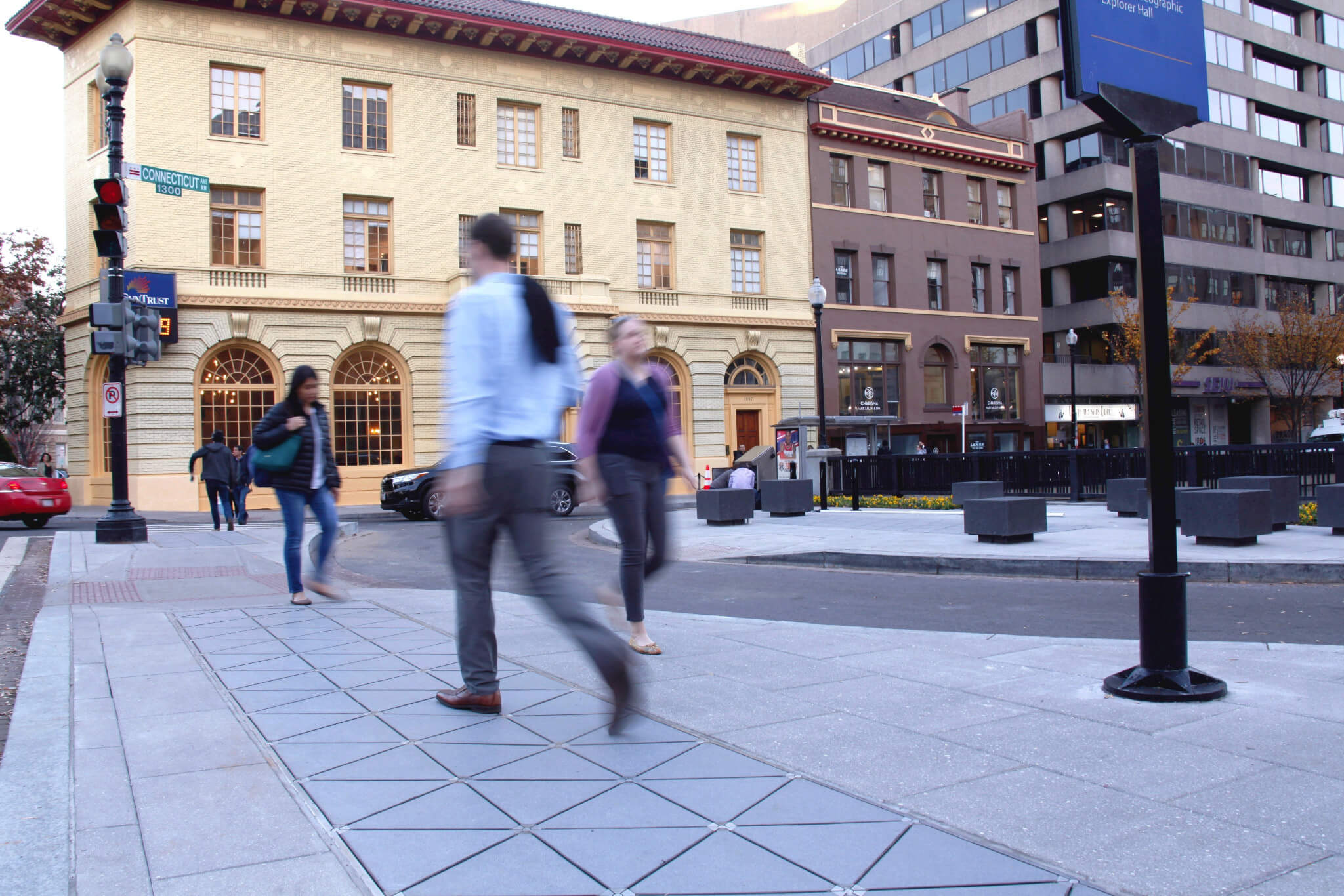Every step taken on a sidewalk or pavement is more than just movement; it’s potential energy waiting to be harnessed.
15th February 2024
With the rise of innovative technology, urban planners and engineers are reimagining the role of pedestrian pathways through the integration of kinetic pavements.
These futuristic walkways convert the kinetic energy generated by footsteps into usable electricity, presenting a promising solution to urban sustainability challenges. We're exploring the basics of kinetic pavement technology, its impact on urban sustainability, public interaction, education, and examining case studies from cities that are leading the way in implementing this groundbreaking technology.
The Basics of Kinetic Pavement Technology
Kinetic pavement technology operates on a simple principle: the conversion of mechanical energy from pedestrian footsteps into electrical energy. Beneath the surface of these pavements lie a network of sensors and generators that capture the pressure and movement caused by walking. As individuals traverse these pavements, their footsteps cause slight deflections, activating the embedded mechanisms that produce electricity.
These systems utilise various mechanisms such as electromagnetic generators, to convert mechanical energy into electrical power. The generated electricity can be stored in batteries or fed directly into local applications, such as phone charging stations, lighting, or data capture.
Impact on Urban Sustainability
The integration of kinetic pavements into urban infrastructure offers a myriad of sustainability benefits. Firstly, it provides a renewable energy source that reduces reliance on fossil fuels, thereby mitigating carbon emissions and combating climate change. Additionally, the decentralised nature of these energy generators contributes to greater energy resilience and reliability within urban environments.
Moreover, kinetic pavements promote active transportation and healthier lifestyles by encouraging walking and cycling. As pedestrians become more aware of their role in generating clean energy, it fosters a sense of environmental stewardship and community engagement.
Public Interaction and Education
One of the most intriguing aspects of kinetic pavements is their ability to engage the public in sustainability initiatives actively. These interactive installations serve as educational tools, raising awareness about energy conservation and renewable resources. By visually demonstrating the connection between human actions and energy production, kinetic pavements empower individuals to take ownership of their environmental impact.
Furthermore, the idea of walking on pavements that generate electricity sparks curiosity and fosters a sense of wonder among citizens. Public spaces adorned with kinetic pavements become hubs of activity and conversation, facilitating dialogue around sustainability and urban innovation.
Case Studies from Cities Implementing Kinetic Pavements
Several cities around the world have embraced kinetic pavement technology as a means of enhancing urban sustainability and promoting renewable energy. For instance, London's Bird Street features kinetic tiles that harness energy from the footsteps of shoppers, powering nearby streetlights and amenities.
In in Dupont Circle, Washington DC, one of the busiest pedestrian intersections outside the White House, has been equipped with kinetic tiles to capture the immense foot traffic and convert it into electricity to power street lighting. This initiative not only reduces carbon emissions but also serves as a symbol of commitment to technological innovation.
Conclusion
Kinetic pavements represent a remarkable convergence of technology, sustainability, and public engagement. By transforming pedestrian foot traffic into a source of clean energy, these innovative installations hold the potential to revolutionise urban infrastructure and reshape the way we interact with our cities.
As more cities recognise the benefits of kinetic pavements, we can expect to see widespread adoption and further advancements in the field. Ultimately, by harnessing the power of every step we take, we pave the way towards a more sustainable and resilient urban future.
//
ENDS
For more information about how Pavegen kinetic technology is helping pave the wave for a more sustainable future, contact press@pavegen.com.
If you would like to sign-up to receive news and updates from Pavegen, complete our stay in touch contact form.
About Pavegen
Pavegen is a purpose-driven technology business that helps power change and generates positive outcomes for people and planet. Laying underfoot inside buildings, public spaces and at events, Pavegen Kinetic Paving harnesses the power of people’s footsteps, creating not only a small amount of energy – but also imaginative, interactive experiences and data, to help educate, engage and enable meaningful actions around sustainability and Net Zero intent. Pavegen calls this Citizen Impact; powered by Pavegen.
Pavegen helps power Kinetic Street Furniture applications such as USB charging, LED lights, and Green Wall irrigation systems, whilst data from the system can be used for public educational purposes on digital display screens. Kinetic Brand Experiences at live events, expos, festivals and public spaces produce data to provide gamified experiences that help brands engage meaningfully with consumers.
The company was founded in 2009 by Laurence Kemball-Cook who invented the Kinetic Paving technology that can now be seen in over 37 countries around the world.


